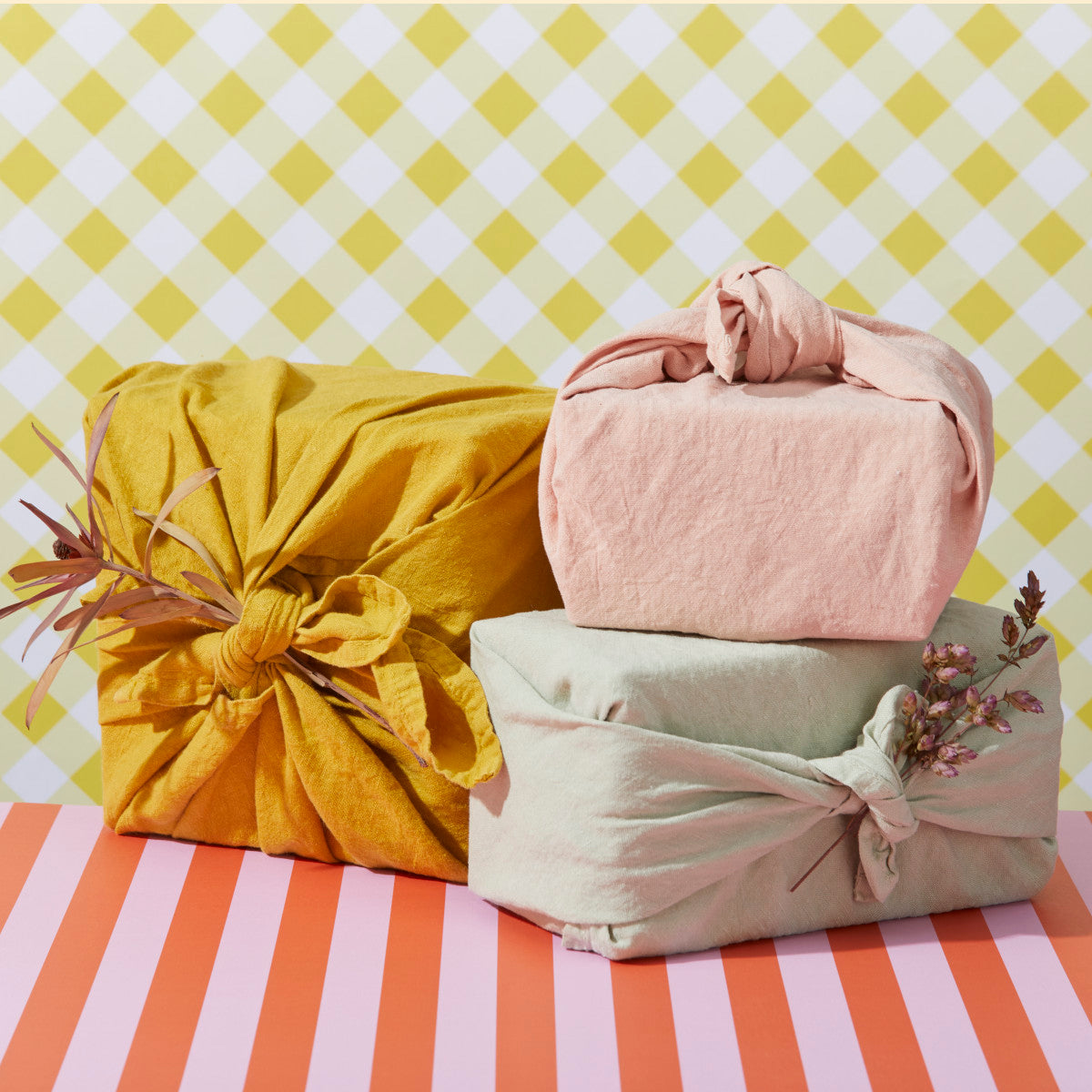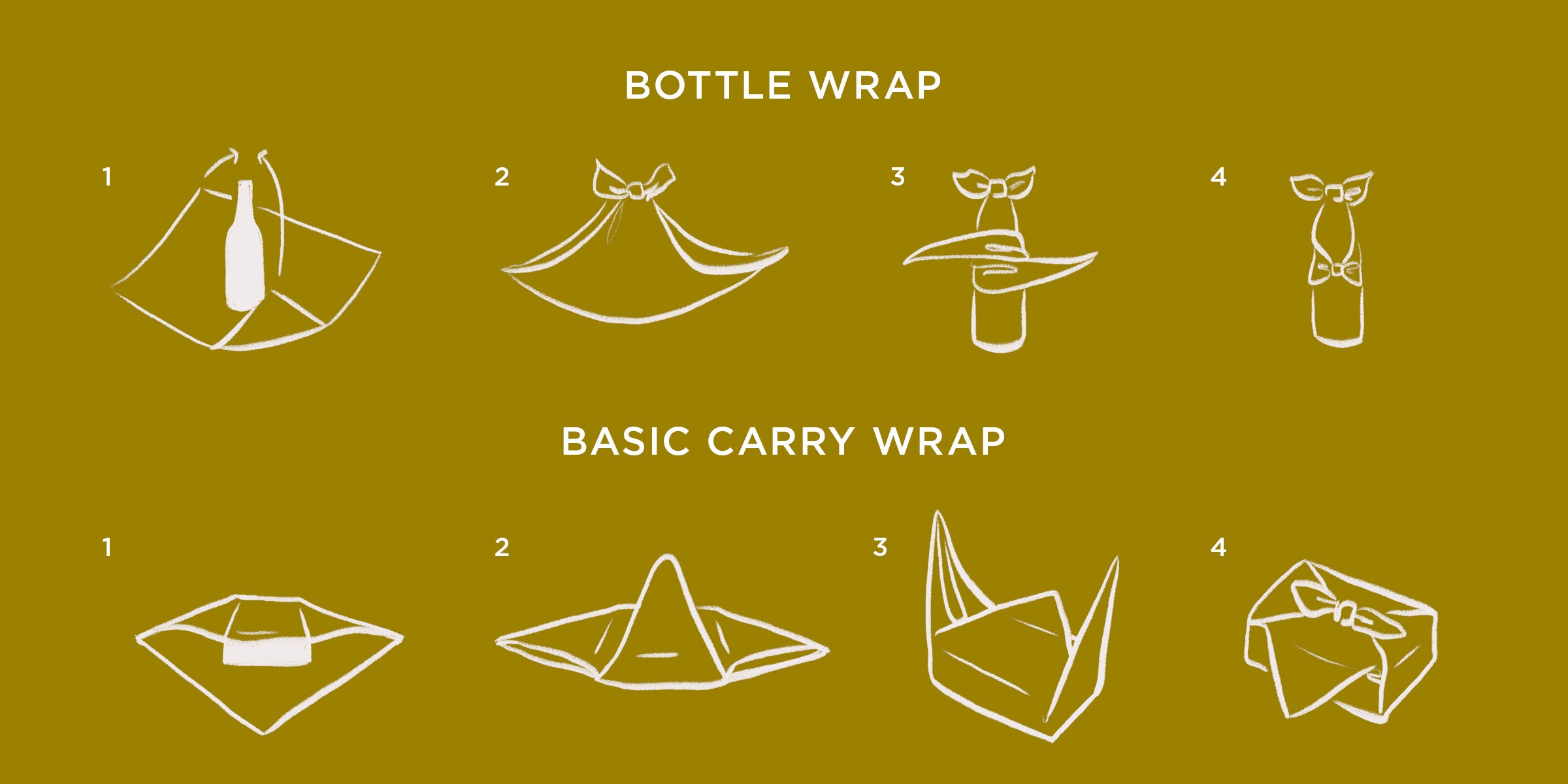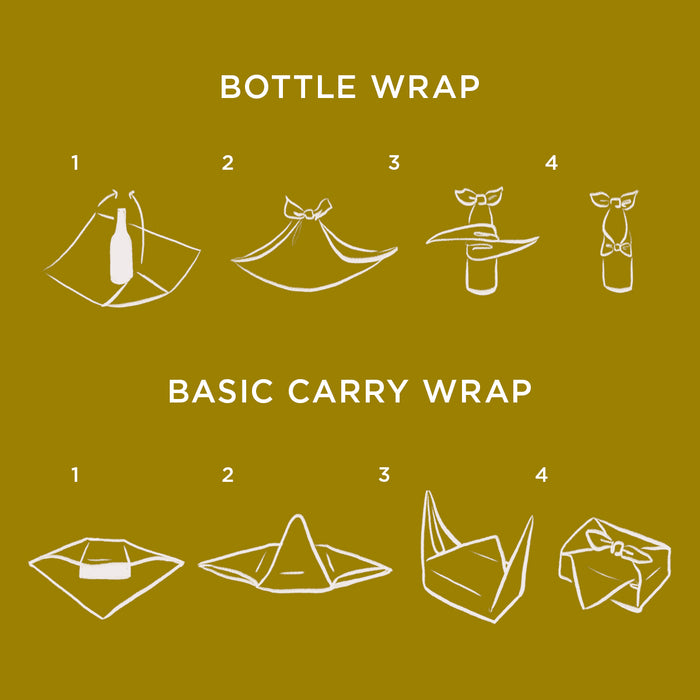It’s official: there’s no need for wrapping paper anymore. Yes, your days of picking from a pile of patterns on your way out of the grocery store could very well be gone, because we’d like to introduce you to a new gift wrapping option: the Japanese tradition that adds an extra touch of charm and sustainability to your holiday gift presentations called Furoshiki. Furoshiki are Japanese cloths originally used for carrying belongings, but they're now a popular choice for wrapping holiday gifts – and our personal favorite way to present your presents. We love that Furoshiki embodies the ethos of longevity, serving as both a practical means of carrying items and an artful method of wrapping gifts, celebrating the beauty of the cloth used while centering its utility.
The history of Furoshiki
Furoshiki traces its roots back to a time when fabric was a precious commodity. The fabrics used for Furoshiki, such as silk, cotton, and ramie (a vegetable fiber-based material similar to linen), were meticulously crafted through labor-intensive processes. Because it took so much work to create these fabrics, they were used and reused until the very end of their lifecycle. This idea of treasuring a fabric and continuing to use it is unfortunately the opposite of our general attitude toward most materials in the contemporary Western world, particularly when it comes to the holidays. This is why it's such a great addition and revision to the holiday season experience.
Furoshiki for the holidays
Luckily for us, this practice once confined to Japanese culture has transcended borders as a more interesting and thoughtful alternative to conventional gift wrapping. Besides not contributing to the heap of used wrapping paper to be inevitably thrown away (and likely non-recycled), using this style of wrapping also allows you to give a gift within a gift by wrapping items up with a set of linen napkins, a dish towel, or a bandanna. In the spirit of its traditional use, we strongly encourage passing these wrapping materials around your family or friend groups; using them again and again to create a shared tradition will add a special touch to the act of giving each season.
It’s important to select the right-sized Furoshiki – approximately 3 times the length of the gift – to ensure your gift isn’t swimming in a pile of excess fabric. Because your wrapping material of choice is essentially a blank canvas, ripe for your creativity, you can make it more personalized by decorating a square cotton bandanna to use as your Furoshiki, or adding embellishments like branches or dried flowers tucked into its final fold. If there’s one thing we’re sure of, it’s that gifting a hand wrapped present with a thoughtfully and sustainably decorated exterior will make whatever’s inside your wrap even more special. Plus, you’re saved from hours of measuring, cutting, taping, and wondering why you didn’t save any boxes in preparation… which is a major win.
Now that we’ve sold you on the practice of Furoshiki, you can learn how to tie a few wraps yourself.
Step-by-Step
- Bottle Wrap
- Lay your cloth right-side down and place the bottle diagonally in the center.
- Pull two opposite corners up around the top of the bottle and tie a double knot on top.
- Grab the two remaining corners and wrap around your bottle, crisscrossing.
- Tie in a double knot or bow. Adjust, tuck, and gift.
- Basic Carry Wrap
- Lay the cloth flat, position the gift in the middle, with the square’s pointed edge facing you.
- Take the corner in front of you, lay it over the gift, and tuck the corner of extra cloth underneath. Do the same with the opposite lower side. It’s okay if the extra fabric at the corner hangs loose.
- Narrow the sides to create handles and bring them together. Ideally the edges of each side will meet in the middle, in a line pointing to the corners of each side.
- Take the left and right side handles and bring them together at the top of the gift. Tie into a double knot, also known as a square knot or the “ma-musubi.”
Let’s wrap it up
The holidays aren’t about shopping for the right thing or for spending hundreds of dollars for the sake of a good deal. The best part about giving a gift to someone you love is showing how much you think about them, how well you know them, and that you’re happy to take time out of your life to put together something that you know they’ll love. This is why Furoshiki is such a great way to tie up these tokens of thoughtfulness. Because those items you so carefully selected deserve to be carefully wrapped up in something special too.


